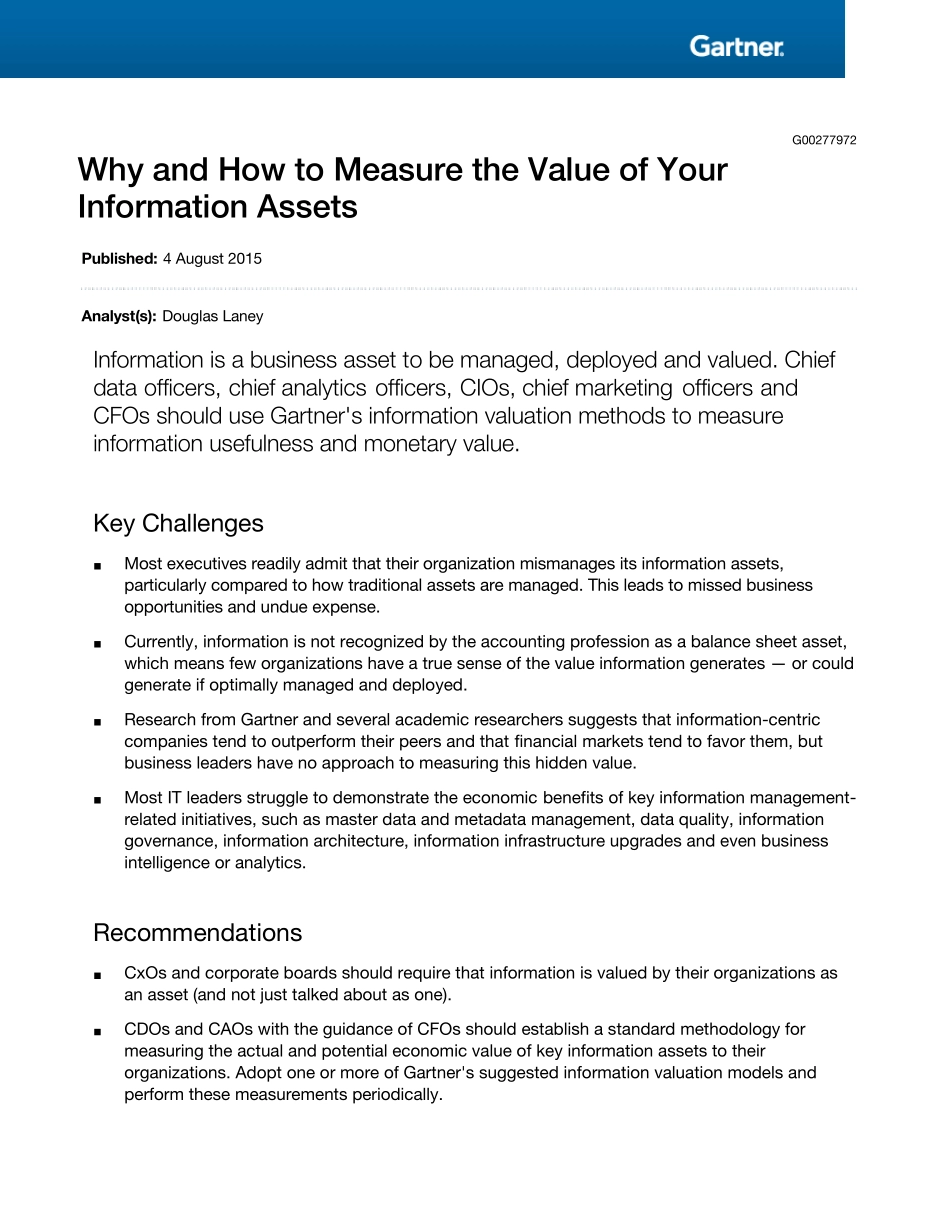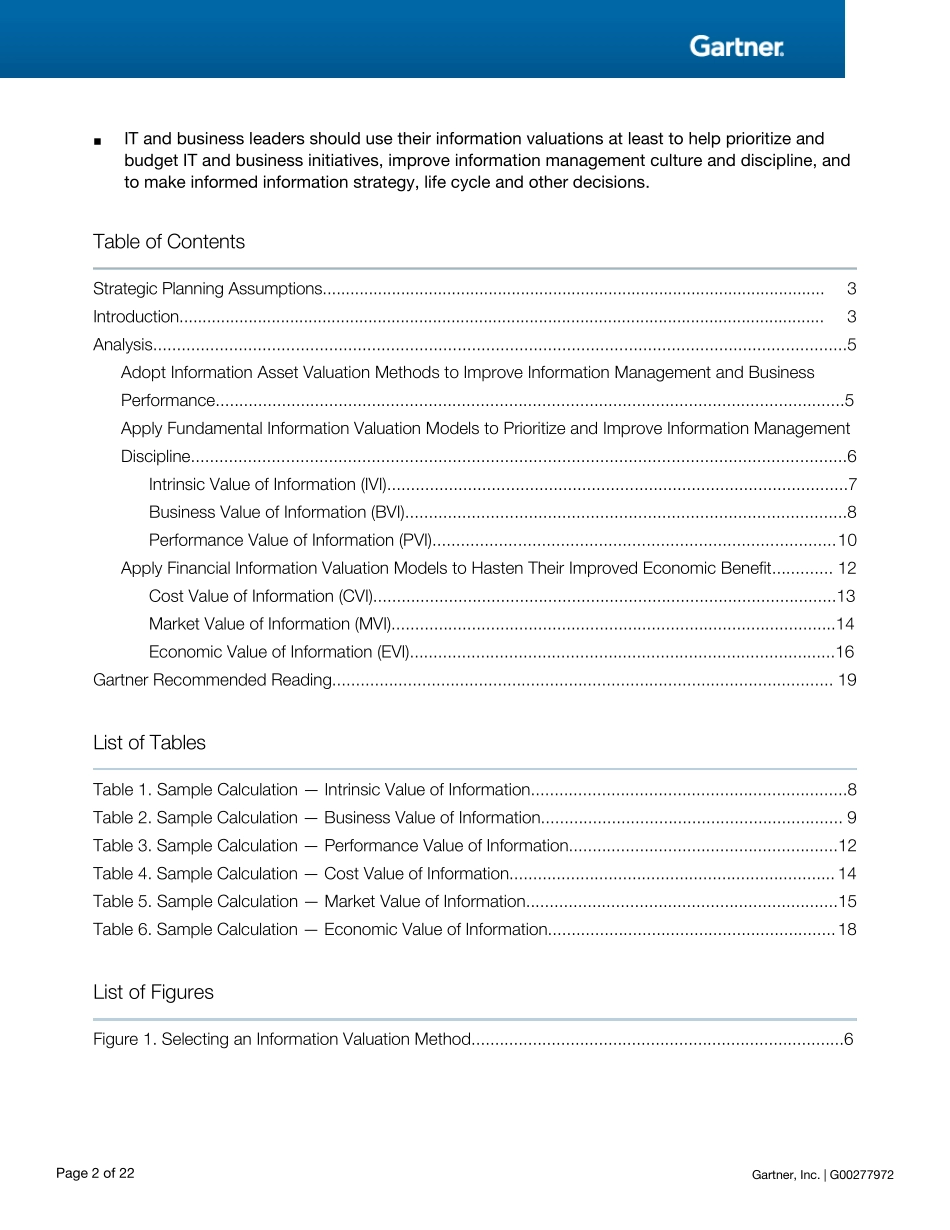G00277972Why and How to Measure the Value of YourInformation AssetsPublished: 4 August 2015Analyst(s): Douglas LaneyInformation is a business asset to be managed, deployed and valued. Chiefdata officers, chief analytics officers, CIOs, chief marketing officers andCFOs should use Gartner's information valuation methods to measureinformation usefulness and monetary value.Key Challenges■Most executives readily admit that their organization mismanages its information assets,particularly compared to how traditional assets are managed. This leads to missed businessopportunities and undue expense.■Currently, information is not recognized by the accounting profession as a balance sheet asset,which means few organizations have a true sense of the value information generates — or couldgenerate if optimally managed and deployed.■Research from Gartner and several academic researchers suggests that information-centriccompanies tend to outperform their peers and that financial markets tend to favor them, butbusiness leaders have no approach to measuring this hidden value.■Most IT leaders struggle to demonstrate the economic benefits of key information management-related initiatives, such as master data and metadata management, data quality, informationgovernance, information architecture, information infrastructure upgrades and even businessintelligence or analytics.Recommendations■CxOs and corporate boards should require that information is valued by their organizations asan asset (and not just talked about as one).■CDOs and CAOs with the guidance of CFOs should establish a standard methodology formeasuring the actual and potential economic value of key information assets to theirorganizations. Adopt one or more of Gartner's suggested information v...


